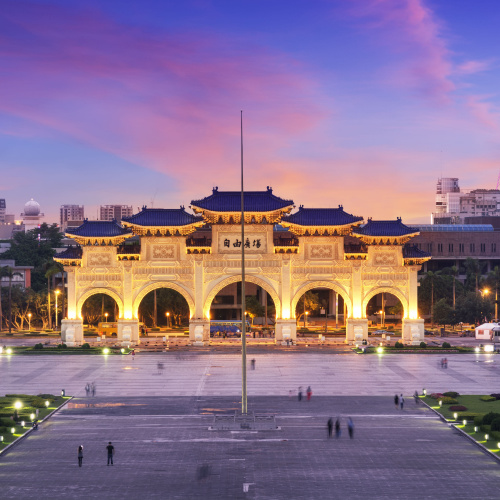
r.nagy/Shutterstock
When Is the Best Time to Visit Taiwan?
The best time to visit Taiwan is during the shoulder seasons of spring (February to April) and autumn (October to December). During these months, the weather is generally mild and sunny, with fewer crowds and lower prices than during the peak summer (May to June) and tourist (January to February) seasons.
Here are some of the benefits of visiting Taiwan during the shoulder seasons:
- Mild weather: Taiwan has a subtropical climate, but the shoulder seasons offer the most pleasant weather, with average temperatures ranging from 15 to 25 degrees Celsius (59 to 77 degrees Fahrenheit). This makes it ideal for sightseeing, exploring, and enjoying the outdoors.
- Smaller crowds: The shoulder seasons are less crowded than the peak summer and tourist seasons, so you’ll be able to enjoy Taiwan’s popular attractions without having to deal with large crowds. This is especially important if you’re visiting popular destinations like Taipei, Kaohsiung, and Taichung.
- Lower prices: Prices for flights, accommodation, and activities are generally lower during the shoulder seasons than during the peak summer and tourist seasons. This means you can save money on your trip without having to sacrifice quality.
Here are some specific examples of how you can enjoy the most of Taiwan during the shoulder seasons:
- Spring: Spring in Taiwan is a beautiful time to visit, with the cherry blossoms in bloom. Popular activities during this time of year include visiting cherry blossom festivals, hiking in the mountains, and picnicking in the parks.
- Autumn: Autumn in Taiwan is another beautiful time to visit, with the leaves changing color. Popular activities during this time of year include visiting temples and palaces, hiking in the mountains, and enjoying the cooler weather.
While there are many great times to visit Taiwan, if you’re looking for the best weather, fewer crowds, and lower prices, then we recommend visiting during the shoulder seasons of February to April and October to December.
 Average Temperatures by Month
Average Temperatures by Month
|
Jan |
Feb |
Mar |
Apr |
May |
Jun |
Jul |
Aug |
Sep |
Oct |
Nov |
Dec |
| Fahrenheit |
61°
|
62°
|
65°
|
70°
|
76°
|
81°
|
85°
|
85°
|
81°
|
76°
|
70°
|
64°
|
| Celsius |
16°
|
17°
|
18°
|
21°
|
24°
|
27°
|
29°
|
29°
|
27°
|
24°
|
21°
|
18°
|
Climate in Taiwan
Summer Season in Taiwan
Taiwanese summers are hot and humid, with temperatures often rising significantly. This season is characterized by long days, intense sunlight, and occasional heat waves, especially in the southern and central parts of the island. Summer is also the time for typhoons, which can bring heavy rains and strong winds, affecting travel and outdoor activities.
Rainy Season in Taiwan
The rainy season in Taiwan, overlapping with the summer months, is marked by the East Asian Monsoon, bringing frequent and sometimes heavy rainfall. The intensity and duration of the rainy season can vary across different regions of the island. This season is crucial for replenishing water reservoirs but can impact outdoor activities due to wet conditions.
Winter Season in Taiwan
Winters in Taiwan are mild, particularly in the northern and northeastern parts of the island, where it's cooler and wetter. The southern part of Taiwan experiences warmer and drier winter conditions. Snowfall is rare and usually confined to high mountainous areas. This season is characterized by cooler temperatures and less humidity, making it a comfortable time for exploring the island's natural and cultural attractions.
Our Recommendations
| Destination |
Jan |
Feb |
Mar |
Apr |
May |
Jun |
Jul |
Aug |
Sep |
Oct |
Nov |
Dec |
| Taiwan |
 |
 |
 |
 |
 |
 |
 |
 |
 |
 |
 |
 |






